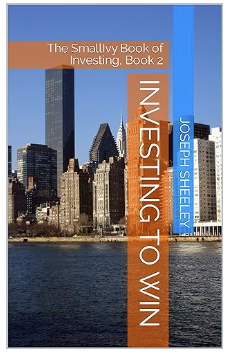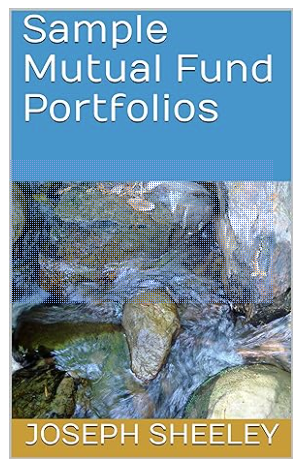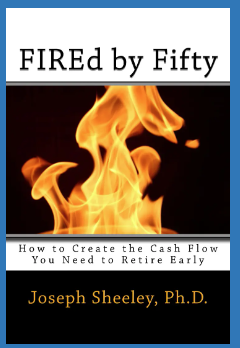
Photo by Markus Winkler on Pexels.com
" data-orig-size="1880,1254" sizes="(max-width: 1880px) 100vw, 1880px" data-image-title="scrabble letters spelling yield on a white table" data-orig-file="https://smallivy.files.wordpress.com/2024/01/pexels-photo-18512943.jpeg" data-image-description="" data-image-meta="{"aperture":"0","credit":"","camera":"","caption":"","created_timestamp":"0","copyright":"","focal_length":"0","iso":"0","shutter_speed":"0","title":"","orientation":"0"}" width="1880" data-medium-file="https://smallivy.files.wordpress.com/2024/01/pexels-photo-18512943.jpeg?w=300" data-permalink="https://smallivy.com/2024/01/15/stepping-into-the-great-dividend-debate/pexels-photo-18512943/" alt="" height="1254" srcset="https://smallivy.files.wordpress.com/2024/01/pexels-photo-18512943.jpeg 1880w, https://smallivy.files.wordpress.com/2024/01/pexels-photo-18512943.jpeg?w=150&h;=100 150w, https://smallivy.files.wordpress.com/2024/01/pexels-photo-18512943.jpeg?w=300&h;=200 300w, https://smallivy.files.wordpress.com/2024/01/pexels-photo-18512943.jpeg?w=768&h;=512 768w, https://smallivy.files.wordpress.com/2024/01/pexels-photo-18512943.jpeg?w=1024&h;=683 1024w" class="wp-image-23945" data-large-file="https://smallivy.files.wordpress.com/2024/01/pexels-photo-18512943.jpeg?w=723" />Photo by Markus Winkler on Pexels.comFinancial Twitter (FinTwit) has gotten into a debate over whether it is better to buy dividend stocks or growth stocks. Those in the dividend camp (who were probably in the bitcoin camp or the VOO camp before) talk about all of the great money they’re getting from dividends. Those in the growth camp say that dividends don’t matter, so you should focus on growth stocks and just sell shares when you need cash? Who is right? Kind of, both. We’ll get into the reasons why today.
Want to learn the secrets to investing and really turbocharge your returns? Check out the second book in The Small Investor series, Investing to Win. This book presents 40 years of investing experience. Someone starting with zero knowledge of investing and the stock market could take this book and learn all that they needed to invest and do well. It would also be useful to someone who has invested and traded stocks for a while but who is really not getting the kind of returns desired.

(Note, this site contains affiliate links. As an Amazon Associate I earn from qualifying purchases. When you click on an affiliate link and buy something, The Small Investor will get a small commission for the referral. You are charged nothing extra for the purchase. This helps keep The Small Investor going and free. I don’t recommend any products I do not fully support. If you would like to help but don’t see anything you need, feel free to visit Amazon through this link and buy whatever you wish. The Small Investor will get a small commission when you do, again at no cost to you.)
What is a dividend?
When a company makes profits, they usually reinvest a lot of it to continue to grow and expand the company. If they are making enough, they can also pay out a portion of the profits directly to shareholders as a cash payment called a dividend. (They can also use the money to buy shares on the open market, thereby reducing the number of shares outstanding and increasing shareholder value that way.) Most companies that pay a dividend pay out an equal amount quarterly. Some also pay a “special dividend” in December which represents the extra/ unexpected profit they made for the year.
Once a company establishes a dividend, they generally like to maintain it at current levels or even grow it. This is because shareholders like to see a consistent payout. If a company is raising dividends, share price will often grow as well. Likewise, if a dividend gets cut, shares will often drop in price. Companies like to see growing share prices, both because it makes it easier to sell additional shares to raise cash in the future and because the pay of many executives is tied to share price increases.
A dividend is not free money.
Many see dividends and think they’re getting “free money.” You’re not. If you pay attention, you’ll notice that the day a dividend is allocated to current shareholders (called the “ex-dividend day”), the share price will drop to match the dividend being paid out. Because the shareholders are getting some assets from company, the company is worth a little less, so the share price drops. In fact, if you have a limit order in on ex-dividend day, your brokerage will decrease your limit by the amount of the dividend. So, holders of dividend companies get a cash payout, but holders of growth companies see their shares become more valuable, so things are relatively equal.
In fact, because growth companies are reinvesting their profits and growing the company, if they are making good use of the money and choosing good ways to use the money, the growth stock investor will see greater returns over long periods of time than the dividend stock investor. A company that is paying a dividend will generally have grown to the point where there are not a lot of good places to invest the profits, so they see paying money out to shareholders as being the best option. As an investor, you’re starting to use some of the money the company is generating rather than reinvesting it all.
(If you’d like to learn more about how to decide how much you should put in different types of assets, Sample Mutual Fund Portfolios gives lots of information and examples of how to make allocations for all sorts of different goals, including retirement.)

What’s good about dividend stocks?
There are good things about dividend stocks. Because they pay out cash, people who are interested in a regular cash payout will buy them as a way to generate income and their price will in part be based on the dividend relative to other income investments. This means that if stocks fall in price, dividend stocks will tend to hold up better as long as the risk of the dividend being cut isn’t too great.
For example, if a stock paying a $4/share dividend and trading at $100 per share falls to $80 per share, its effective yield (interest rate) goes up from 4% to 5%. If someone wants to generate income and bonds are paying 4%, they might start buying shares of the stock when the yield moves up to 5%, thereby keeping the price from falling further. Another stock trading at $100 and paying no dividend has no such protection because the yield is 0% in either case.
Dividend stocks are also good if you pay a substantial commission when you buy or sell shares and you need money from your portfolio to pay for regular expenses. For example, if it costs you a minimum of $50 to sell shares and you need $2000 per month to cover expenses, you’re losing 2.5% to commissions if you’re selling shares every month. You might also need to sell more than you wish if your shares are at a high price and you need to sell in equal share increments, so you might need to sell $2500 worth when you only need $2000. In this case if you can buy stocks that pay out $2000 in can in dividends each month, you can use that money for expenses rather than needing to sell shares regularly.
Selling shares also involves a degree of market timing, as share prices might change by 5% or more from week to week. During times of great volatility, especially during big downward moves, the investor is left wondering whether it is better to sell today or wait a few days for a better price. Having a dividend eliminates this stress since there is no need to make the decision of when and if to sell shares.
The payouts for dividend stocks tend to be fairly reliable as well. While the prices of the stocks’ shares can and do change just like they do with growth stocks, the dividend payouts tend to be fairly predictable. Most companies try not to reduce their dividends. In fact, they try to grow dividends over time if they can. To meet this goal, they’ll usually pay out a lot less than they make in profits each year so that they can still pay out dividends even if business slows a bit. In a slowdown they’ll curtail expansion plans before they’ll cut the dividend. Because the payouts come from profits and not the share price, dividend investors will often see little or no reduction in the income they receive during slowdowns. Of course, there are times when a company falls on really hard times and needs to cut or eliminate the dividend for a time period. Share price usually suffers during these times too, however.
Before you can start investing, you need money to invest. Check out FIREd by Fifty: How to Create the Cash Flow You Need to Retire Early. You’ll learn how to control your cash flow so that you’ll have money to invest and grow wealth.

When are growth stocks better?
Growth stocks, because they’re reinvesting and growing, will outperform dividend stocks over time. Growth stocks tend to be younger, smaller, and have more areas to expand their business than do stocks that pay big dividends. This means that there profits and their share prices usually grow faster, meaning total returns will be higher. You may save on taxes by selling appreciated shares and paying capital gains taxes instead of receiving dividends since long term capital gains tax rates are often (but not always) less.
If you have no need of money right now and would just be reinvesting dividends anyway, finding growth stocks that pay little or no dividend may be a better option. This is particularly true if you’re investing in a taxable account since then you would need to be paying out taxes each year on the dividends even if you are reinvesting the money. By holding mostly growth stocks, you can let your money grow even in a taxable account with little or no taxes taken out until you eventually sell.
If your account is large enough compared to the amount of money you’ll be taking out, such that being forced to sell when share prices are down won’t affect you much, growth stocks might be the better choice even when you are taking cash out. A hybrid approach might be to sell some shares when prices are up and hold more cash than you would if you had more dividends for income. In this way, if there is a market downturn you could hold through it and just spend from the cash until share prices recovered.

The dividend/income fund mindset
If you are using dividend stocks for income rather than investing for growth, you’ll often be investing through a fund rather than buying individual stocks just as you will often do when investing for growth. Not only does this reduce the risk that comes from investing in individual stocks, but it also tends to mean receiving regular monthly payouts rather than quarterly dividends. Most funds will pay out a fixed amount each month based on what they expect to earn in dividends for the year (with the payouts being slightly less than expected dividends), then make an extra payout in December when they make more in dividends than the payouts and/or have capital gains during the year.
Share price will vary during the year, especially if interest rates are changing. This will have an effect on your total returns, which will include both dividends collected and share price changes. If you just focus on the income, however, and ignore the changes in share price, it makes investing a lot less stressful. If share price declines by 20% because interest rates rise, but you aren’t planning on selling shares, it really doesn’t matter. You still receive the income you need for the year from the dividends. Share prices will rise again when interest rates come down. Just focus on the dividends and realize that there will probably be a chance to sell shares at a higher share price in the future.
Got a question or comment about personal finance or investing? Please leave a comment.
Follow on Twitter to get news about new articles. @SmalllIvy_SI
Disclaimer: This blog is not meant to give financial planning or tax advice. It gives general information on investment strategy, picking stocks, and generally managing money to build wealth. It is not a solicitation to buy or sell stocks or any security. Financial planning advice should be sought from a certified financial planner, which the author is not. Tax advice should be sought from a CPA. All investments involve risk and the reader as urged to consider risks carefully and seek the advice of experts if needed before investing.
